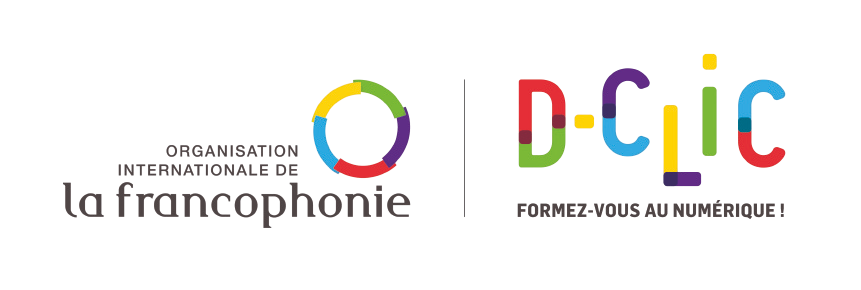Symbols have been an integral part of human culture for thousands of years, serving as visual representations that convey complex ideas, beliefs, and identities. Across civilizations, from the ancient pharaohs to contemporary digital media, symbols function as universal languages that transcend spoken words. Understanding their significance offers a window into our collective history and cultural evolution, illustrating how human societies communicate values, power, and heritage through imagery.
This article explores the fascinating journey of symbols—from their origins in ancient civilizations, their evolving meanings over time, to their modern reinterpretations in media, branding, and gaming. By examining specific examples, we uncover how symbols serve as cultural bridges, storytelling devices, and tools for engaging audiences across eras.
Table of Contents
Historical Origins of Symbols: From Ancient Civilizations to Early Iconography
Ancient civilizations harnessed symbols to represent divine powers, societal structures, and political authority. In Egypt, hieroglyphs combined phonetic and ideographic elements, often depicting gods or animals that embodied divine qualities. For instance, the **falcon-headed god Horus** symbolized kingship and protection. Similarly, the Greeks and Romans used emblems like the eagle—an emblem of imperial power and sovereignty.
The evolution of these symbols was deeply intertwined with societal cohesion. They reinforced shared beliefs, established legitimacy, and fostered unity within vast empires. For example, the Roman eagle (Aquila) served not only as a military standard but also as a political icon, embodying the strength and unity of the empire.
Case Study: The Eagle as a Power Symbol
| Empire | Symbol & Significance | Historical Context |
|---|---|---|
| Ancient Rome | Eagle (Aquila) — Power, Authority | Used on standards and coins to symbolize imperial might |
| United States | Bald Eagle — Freedom, Sovereignty | Chosen as national emblem in 1782, representing liberty |
| Nazi Germany | Eagle clutching swastika — Power, Nationalism | Used in propaganda to evoke authority and unity |
The Evolution of Symbolic Meaning Over Time
Symbols do not have fixed meanings; they evolve as cultures change. The same symbol can acquire new interpretations depending on historical context, religious significance, or social movements. For example, the **swastika** was originally a symbol of good luck in Hinduism and Buddhism before being co-opted by Nazi ideology, transforming its perception globally.
A less obvious but fascinating example is the **four-leaf clover**. Its rarity makes it a symbol of luck, a belief rooted in Irish folklore. Over time, this symbol has been commercialized in branding and games, embodying hope and fortune beyond its original cultural roots.
The Four-Leaf Clover’s Symbolism
- Rarity signifies luck and prosperity
- Cultural association with Irish folklore
- Commercial uses in branding and games
Modern Adaptations of Ancient Symbols in Popular Culture and Media
Ancient symbols are continuously reinterpreted to fit contemporary narratives. In branding, mythological and historical symbols evoke a sense of authority, tradition, or adventure. For instance, companies often use mythic figures or emblems to create memorable identities. The Greek god Zeus, for example, has inspired brands and products that aim to project power and grandeur.
The influence of digital media accelerates this process. Symbols are now crafted with high visual impact, often simplified or stylized for logos and marketing. A modern example is the use of mythological motifs in gaming, where symbols evoke familiarity and emotional resonance.
Case Study: Mythology in Branding
Take **Le Zeus**, a contemporary online slot game inspired by Greek mythology. The use of Zeus’s lightning bolt and regal imagery taps into age-old perceptions of divine power, making the game more engaging. Interestingly, players often explore the game’s paytable to understand symbol values, adding an educational layer to entertainment — you can read the paytable to delve deeper into the symbolism behind each icon.
Symbols in Gaming: From Traditional to Digital Forms
Symbols play a crucial role in the design and mechanics of slot games. Historically, symbols like fruits, bars, and sevens were used for their simplicity and immediate recognizability. With technological advances, especially since the advent of HTML5 around 2010, symbols have become more complex and visually appealing, enhancing player engagement on mobile devices.
One recent trend is paraphrasing bonus names and symbols—using creative language and imagery to increase excitement. Post-2022, many developers incorporate storytelling elements into symbol names, such as “Fortune’s Flame” or “Dragon’s Hoard,” which deepen thematic immersion and attract diverse audiences.
Impact of HTML5 Technology
HTML5 has enabled high-quality animations, responsive design, and complex graphics in mobile slots, allowing symbols to be more intricate. This technological shift has led to richer visual storytelling and increased player retention, as symbols now often include animated effects that reflect their symbolic meanings.
The Psychological and Cultural Impact of Symbols in Modern Gaming
Symbols evoke emotional reactions—winners associate bright, familiar icons with success, while certain symbols can trigger nostalgia or cultural pride. For example, a shamrock or a dragon can resonate differently depending on regional backgrounds, influencing player behavior and engagement.
Game designers strategically incorporate these symbols to attract diverse audiences. Recognizable cultural icons or mythic elements can foster a sense of connection, encouraging longer play and brand loyalty. This practice underscores the importance of understanding cultural semiotics in game development.
Cultural Variations in Symbol Interpretation
- In Western cultures, the rabbit’s foot symbolizes luck, whereas in East Asia, dragons are associated with power and wisdom.
- Symbols like the lotus flower represent purity in some cultures but may have different connotations elsewhere.
Unlocking Hidden Meanings: The Semiotics of Symbols in Games and History
Semiotics—the study of signs and symbols—reveals multiple layers of meaning behind visual icons. An eagle, for example, can symbolize freedom, sovereignty, or divine authority depending on the context. In games, such as those inspired by myth or history, symbols serve as storytelling devices that bridge cultural narratives and enhance immersion.
The shamrock, often associated with Ireland, signifies luck but also national identity. Mythological references, like the Norse hammer or Greek gods, evoke stories that deepen player engagement and cultural understanding. Context is crucial: interpreting symbols without considering their background can lead to miscommunication.
Symbols as Storytelling Devices
Effective storytelling in games and media relies on symbols to convey complex ideas quickly. For instance, a thunderbolt in a game might indicate power or danger, while a shield can symbolize protection. Recognizing these semiotic cues enhances player experience and cultural literacy.
Future Trends: The Continual Evolution of Symbols in Digital and Cultural Realms
Emerging technologies like virtual and augmented reality are creating new platforms for symbols to evolve. In these environments, symbols can be interactive, multi-layered, and personalized, deepening immersion. Artificial intelligence also plays a role in generating new symbolic representations tailored to user preferences and cultural contexts.
Experts predict a future where symbols become more dynamic, context-sensitive, and integrated into everyday digital interactions. For instance, AI could develop culturally specific symbols that adapt to regional tastes, fostering a more inclusive digital culture.
Next Wave of Symbolic Innovation
“As technology advances, the symbols we use will become more personalized and context-aware, serving as universal connectors in a rapidly digitalizing world.”
Conclusion: The Enduring Significance of Symbols Across Time and Technology
From the majestic eagles of ancient empires to the stylized icons of modern gaming, symbols continue to shape our understanding of the world. Their ability to convey complex ideas succinctly makes them invaluable tools for cultural expression and communication. Recognizing the layered meanings behind symbols enriches our appreciation of both historical heritage and contemporary media.
As human society progresses into new digital frontiers, symbols will undoubtedly evolve further, blending tradition with innovation. Whether in virtual environments or in everyday branding, unlocking these symbols helps us connect, understand, and appreciate the diverse tapestry of human culture.
Understanding the power of symbols is essential not only for cultural literacy but also for engaging meaningfully with modern media and entertainment.








